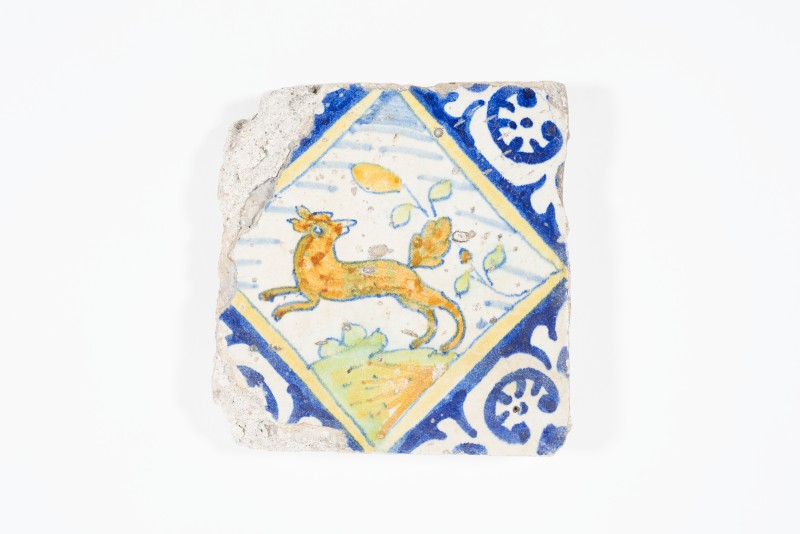Nahezu quadratische Fliese mit Darstellung eines nach links springenden Hundes oder Fuchses mit buschigem Schwanz in Landschaft. Der Kopf nach rechts gewendet. Hinter dem Tier sind abstrakte gelbe Blumen mit grünen Blättern sichtbar. Der Boden in Gelb, Orange und Grün. Das Motiv in Blau und Gelb gerahmter Raute. In den Ecken Maureskenmotive.
Zahlreiche Glasurabplatzungen und Ausbrüche.
Hergestellt in Rotterdam, Delft oder Middelburg
Schenkung Eelco M. Vis, Amsterdam, 1923
Die Fliese wurde nach der Liste vom 4.7.1944 in Schloss Sahlis (bei Kohren) ausgelagert. Die Rückführung ins Museum erfolgte bis Sommer 1946.
en

